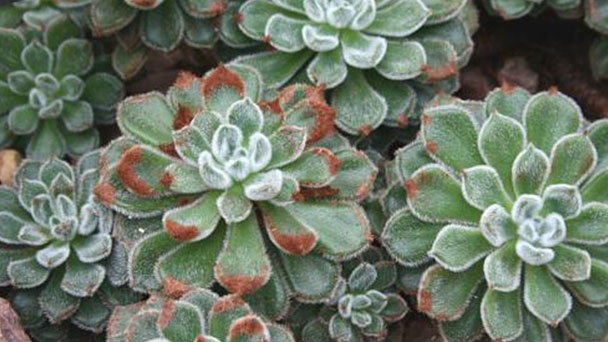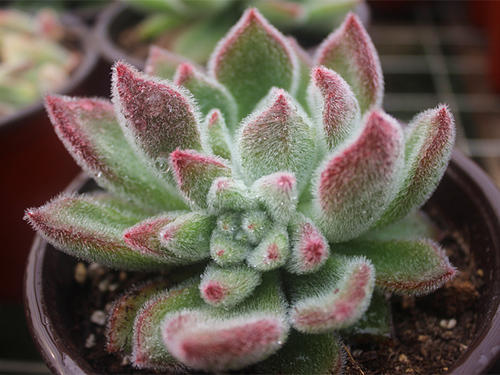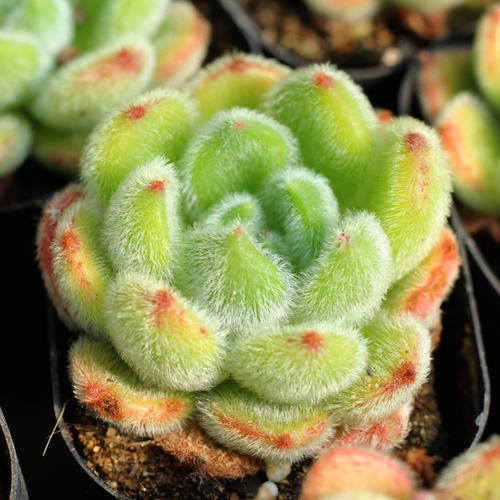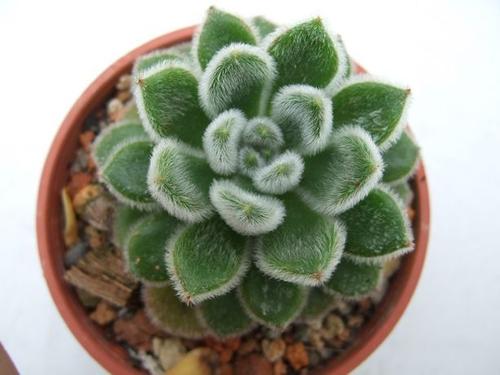How to grow Echeveria setosa
Written by Maggie
Sep 18 2021

Echeveria Setosa succulent plant, the first impression is that it is furry.It is crassulaceae Parasitoids, is a typical mountain succulent plant, plant childhood acaulescent, adult plant lateral bud, easily spread strains. The stem leaf is green, densely white hairy, in bright light and temperature increases. The blade tip and margin will appear red or purple. Some are called "bear's paw" florists to youth.Today, we are going to learn the curing method of succulent Echeveria Setosa!

1. Temperature and light for Echeveria Setosa
Echeveria Setosa likes warm, sunny places, tolerates half shade, without obvious dormant period.In summer maintenance we should pay attention to the sun shading and ventilation in high temperature.
2. Watering and fertilizing for Echeveria Setosa
Echeveria Setosa is drought resistant and is generally watered when the soil is dry. Especially in winter, too much water will lead to roots easy to rot and die. In summer high temperature, also do not water, or the base of the leaf will be yellow atrophy. If it's open-air, it's even more beautiful in the rain. echeveria setosa almost does not hibernate throughout the year. In midsummer, it is ok to pay attention to ventilation and shading. The moisture content is about 2 times a month.

3. Propagation of Echeveria Setosa
Pay attention to the Echeveria Setosa propagation of cutting head cuttings.Cut side branches or top branches from August to October, the length of 5-10 cm, inserted in the sand bed, about 10-15 days after rooting.After the cut is dried, insert or lie flat in the sand bed. Keep the sand bed slightly moist, and it will take root in about 20-30 days. Leaf insertion and reproduction are more difficult than branch reproduction.
4. Soil for Echeveria Setosa
Echeveria Setosa's soil requirements are not very strict, and we can use coal cinder mixed peat soil.

Latest Updated
- Benefits of Bugleweed - 7 Science-backed Health Benefits
- Bugleweed Dangers & Side Effects - Is It Poisonous?
- How to Plant Evergreen Trees - What You Should Know
- When to Plant Evergreens - Grow Guide for Evergreen Trees
- 12 Wonderful Evergreen Shrubs for Your Garden
- 12 Popular Evergreen Plants with Pictures for Beginners
- When And How To Prune A Lilac Bush Like a Pro
- How to Grow & Care for Lilac Vine (Hardenbergia Violacea)
- Japanese Lilac Tree (Syringa Reticulata) Care & Propagation Guide
- Shumard Oak Pros and Cons - What to Know
Popular Articles
- Winter maintenance of Antirrhinum Majus
- How to Grow Terminalia Mantaly Tree
- How to Grow and Care for Crossostephium Chinense
- How to grow Antirrhinum Majus in spring
- Peristeria Elata (Dove Orchid) Profile: Info & Care Guide
- Underwatered Snake Plant (Sansevieria Trifasciata) - Signs And How To Fix
- How to Care for Brazilian Jasmine Plant (Mandevilla Sanderi)
- How to Grow & Care for Graptopetalum Purple Delight in Summer
- Rosa Chinensis (China Rose): Plant Growing & Care Tips
- How to Care for Baby Sun Rose (Aptenia Cordifolia)